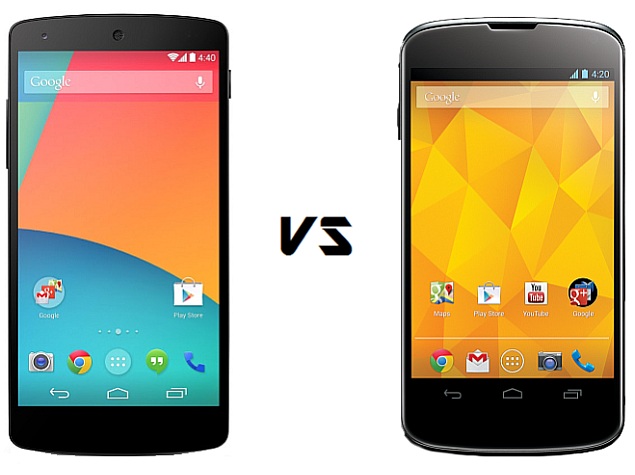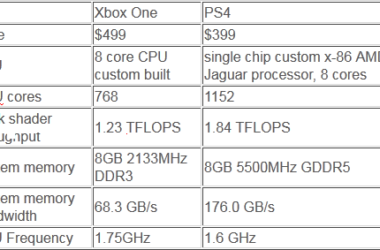The latest generation Google devices have improved substantially compared to the first generation products.
They are now capable of competing alongside the likes of Samsung and HTC, which have adopted the Android operating system to their advantage. The entry of the Nexus 4 changed the outlook for Google devices, while the Nexus 5 manages to build on this image even further. Both devices not only offer a value for money proposition compared to the high-end products from Samsung and HTC, but they also provide the advantage of featuring the latest Android OS.
Package
The two phones come in a neat little package that makes it very hard to look away. The two devices are comparable with every other high-end product, in terms of physical specifications. The Nexus 4 was one of the thinnest devices when it first came into the market in 2012. It measures just 9.1 mm in thickness, but this figure has been reduced to 8.6 mm in the Nexus 5. Further, the latest generation device also manages to reduce its weight by 9 g.
Display Technology
Nexus products have been utilizing the True HD IPS panels in order to differentiate themselves from the Super AMOLED counterparts on the Samsung. While the Nexus 4 used a 4.7 inch display featuring a 720p resolution, Nexus 5 comes with a slightly larger 4.95 inch display that offers full HD resolution. This not only increases the pixel density to a whopping 445 PPI, but the screen is also well protected with third-generation Corning Gorilla Glass display. The Nexus 4 uses the second-generation Corning Gorilla Glass.
Speed
Even though the RAM in Nexus 4 and Nexus 5 stays constant at 2 GB, Google has provided a substantial advantage in terms of the processing power. The quad core 1.5 GHz unit is replaced by a quad core 2.3 GHz unit on the Nexus 5. Despite this, the two phones run on the latest Android 4.4 versions.
Connectivity
Connectivity has been improved on the Nexus 5 because it has additional features like Wi-Fi direct and USB on the go along with the traditional fare that includes Wi-Fi, Bluetooth, micro-USB, Wi-Fi hotspot, and the latest 3G support to up to 42 MB per second in terms of download speeds. The LTE version of the Nexus 5 will support around 50 megabits per second. Both phones come with support for wireless charging out of the box.
Battery Life
The wireless charging feature will be useful on a device that features non-removable batteries. It is a 2100 mAh battery in the case of Nexus 4 and a 2300 mAh unit on Nexus 5. Due to a slightly better battery, the latter will be capable of a few more hours of usage compared to the Nexus 4. Even though both devices use an eight megapixel camera, the shooter on the Nexus 5 comes equipped with several modern features like image stabilization.
The 16 GB variants of the two devices are priced extremely low when the Nexus 5 retailing at $380 compared to the $300 price of the Nexus 4.
Related ItemsNexus 4Nexus 5







